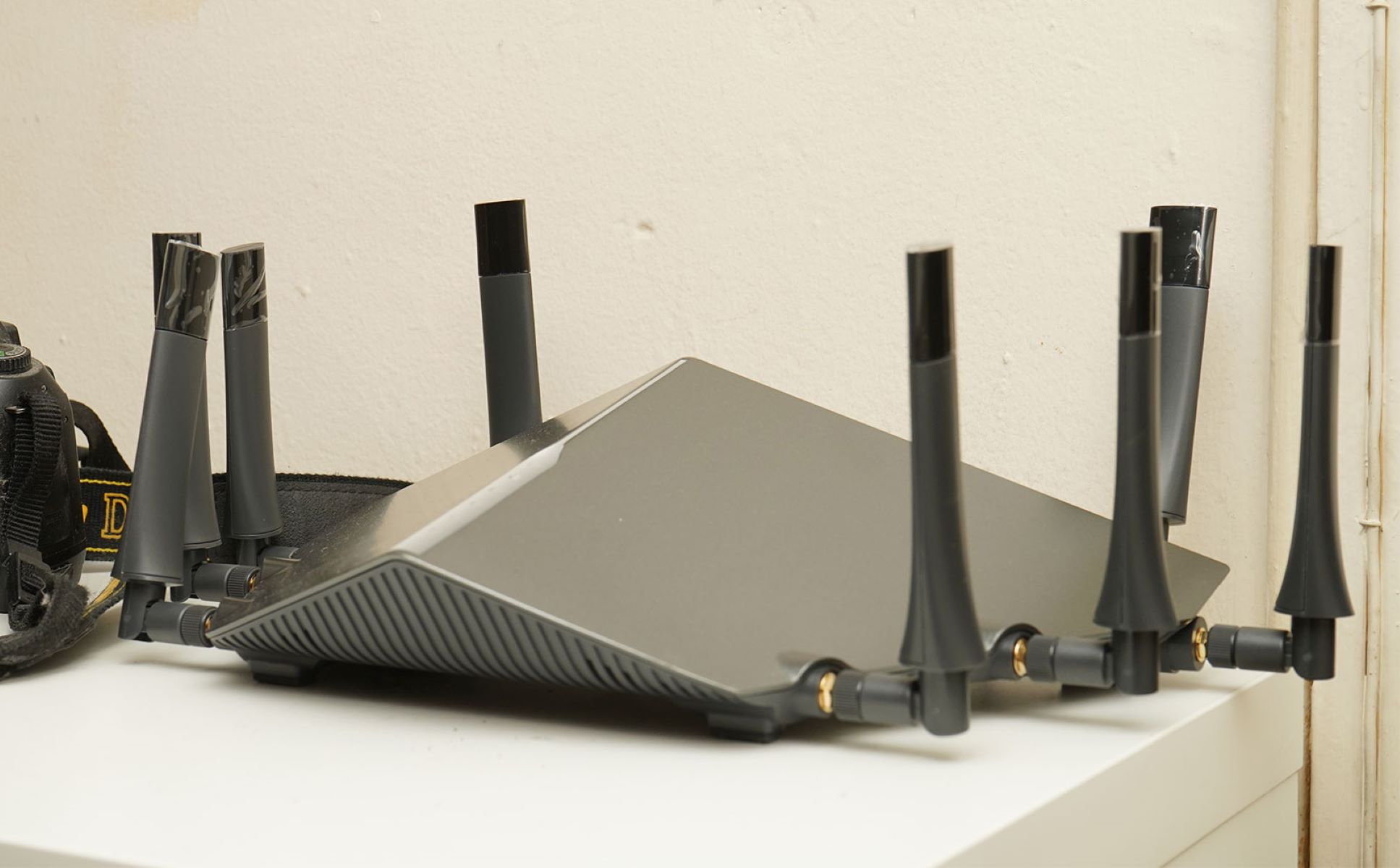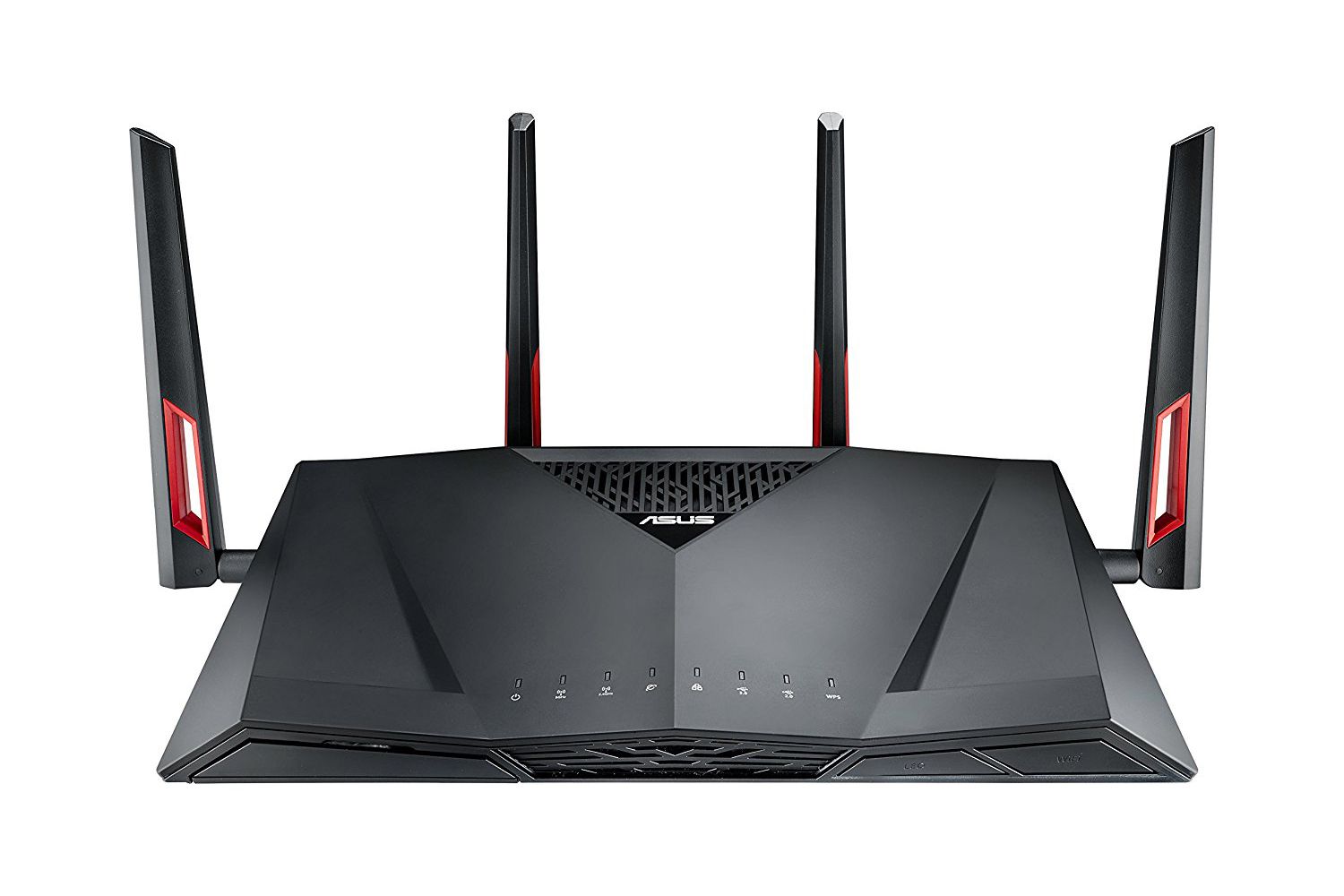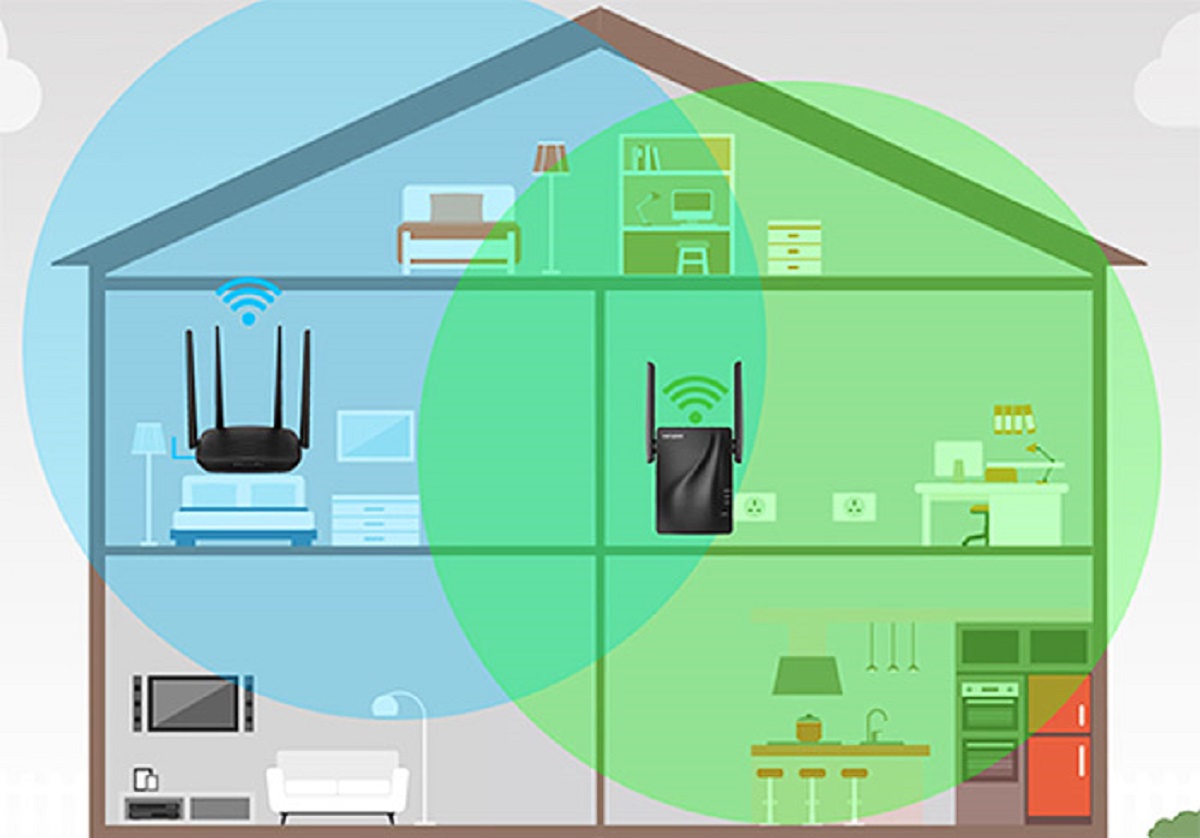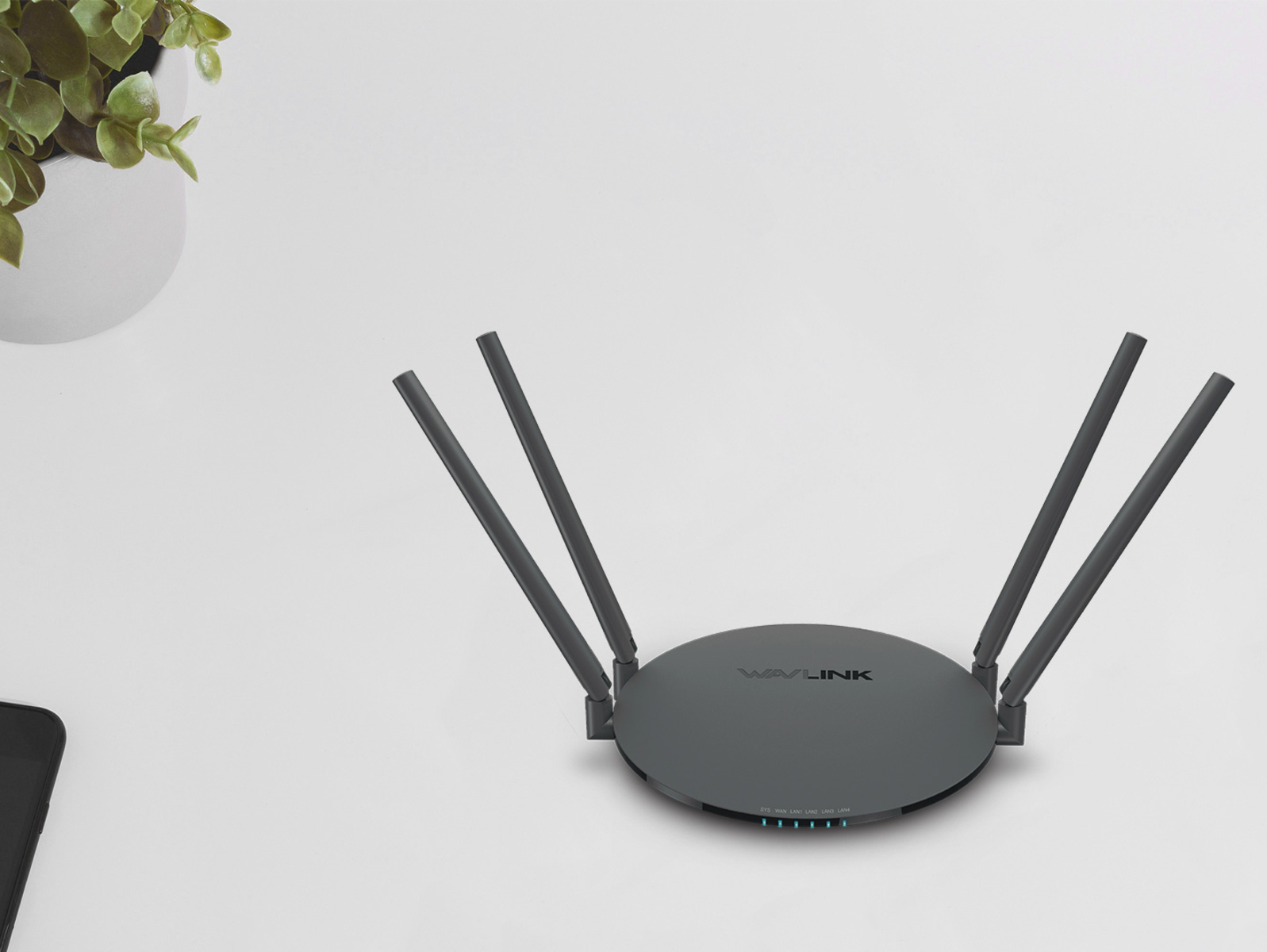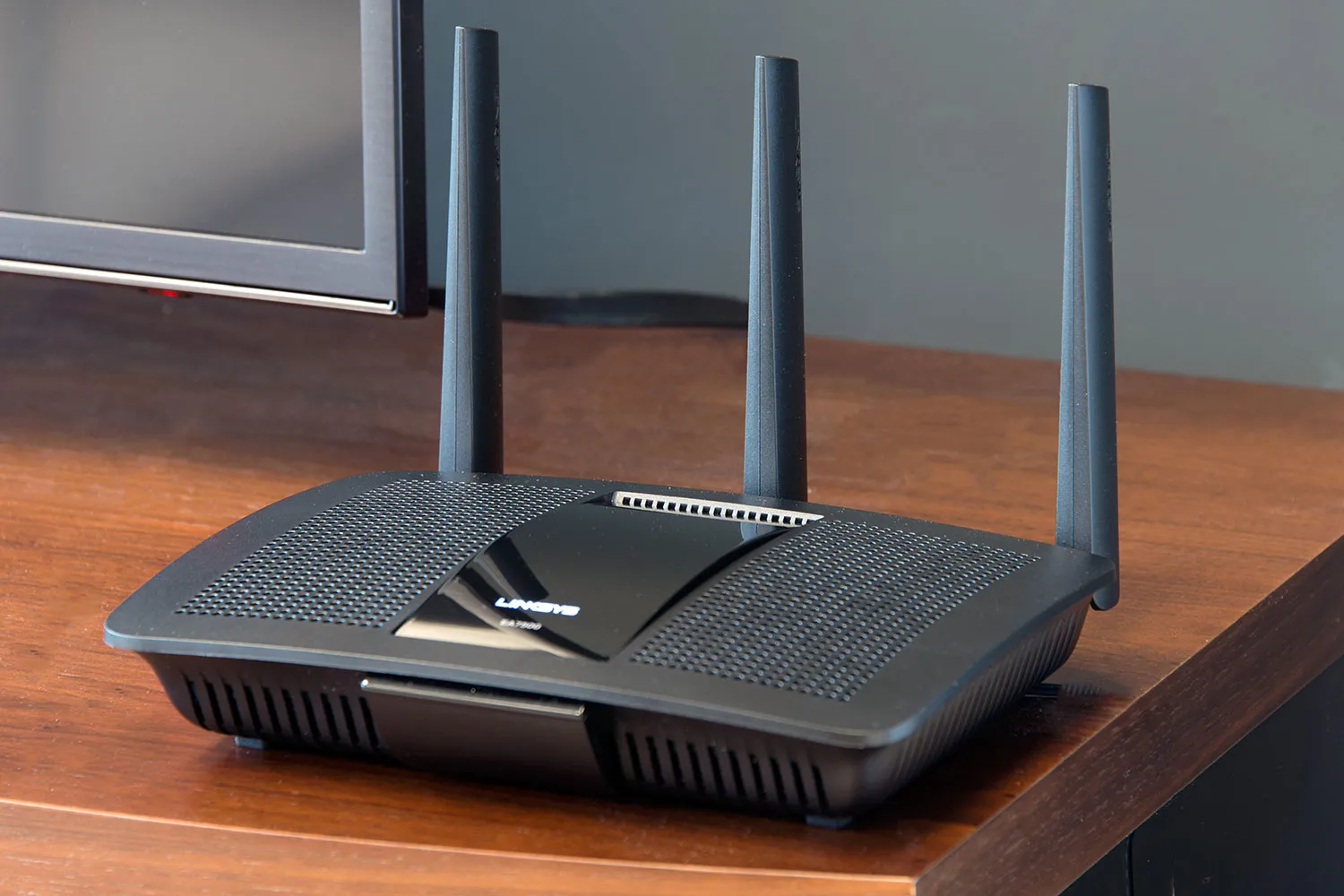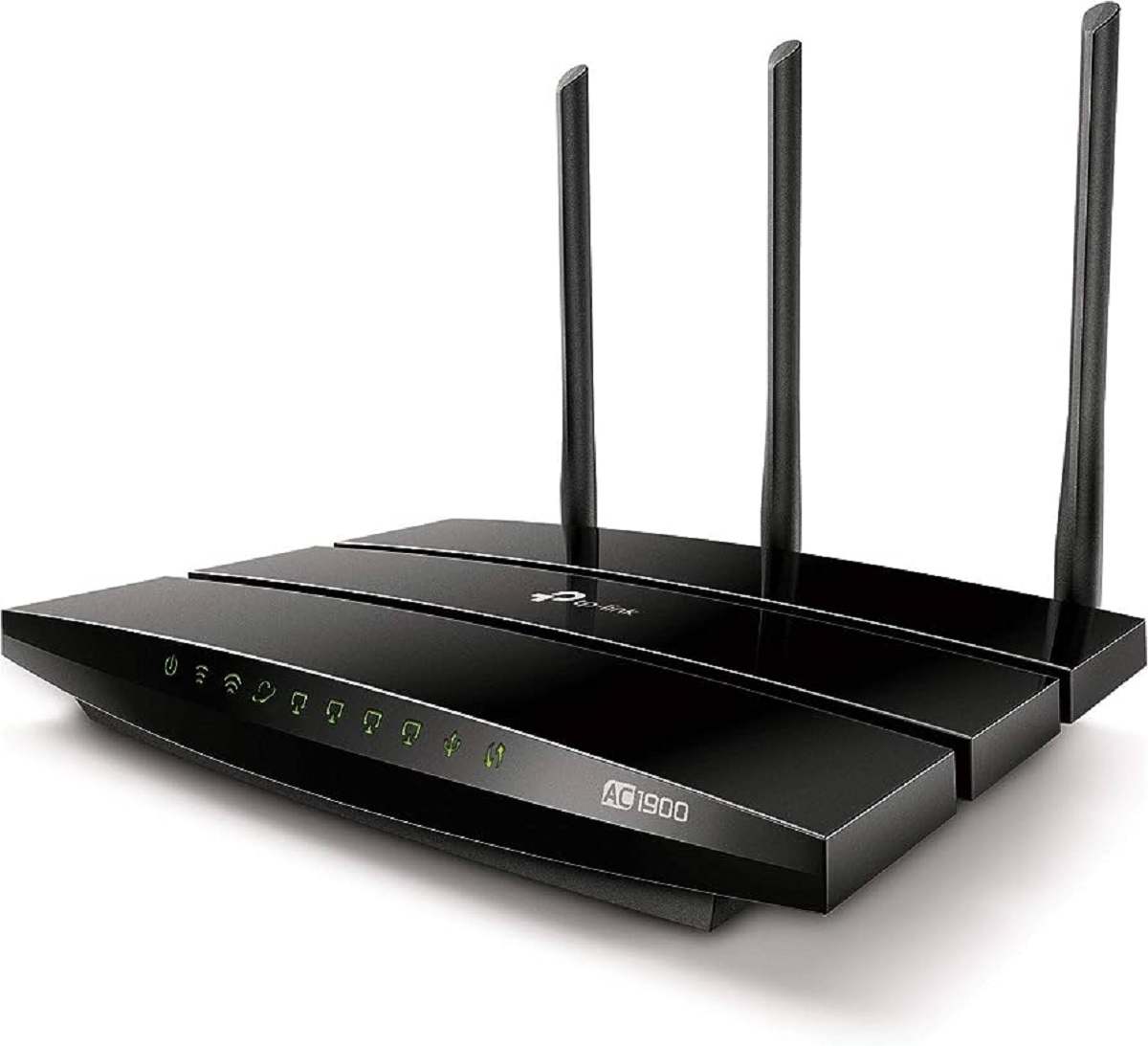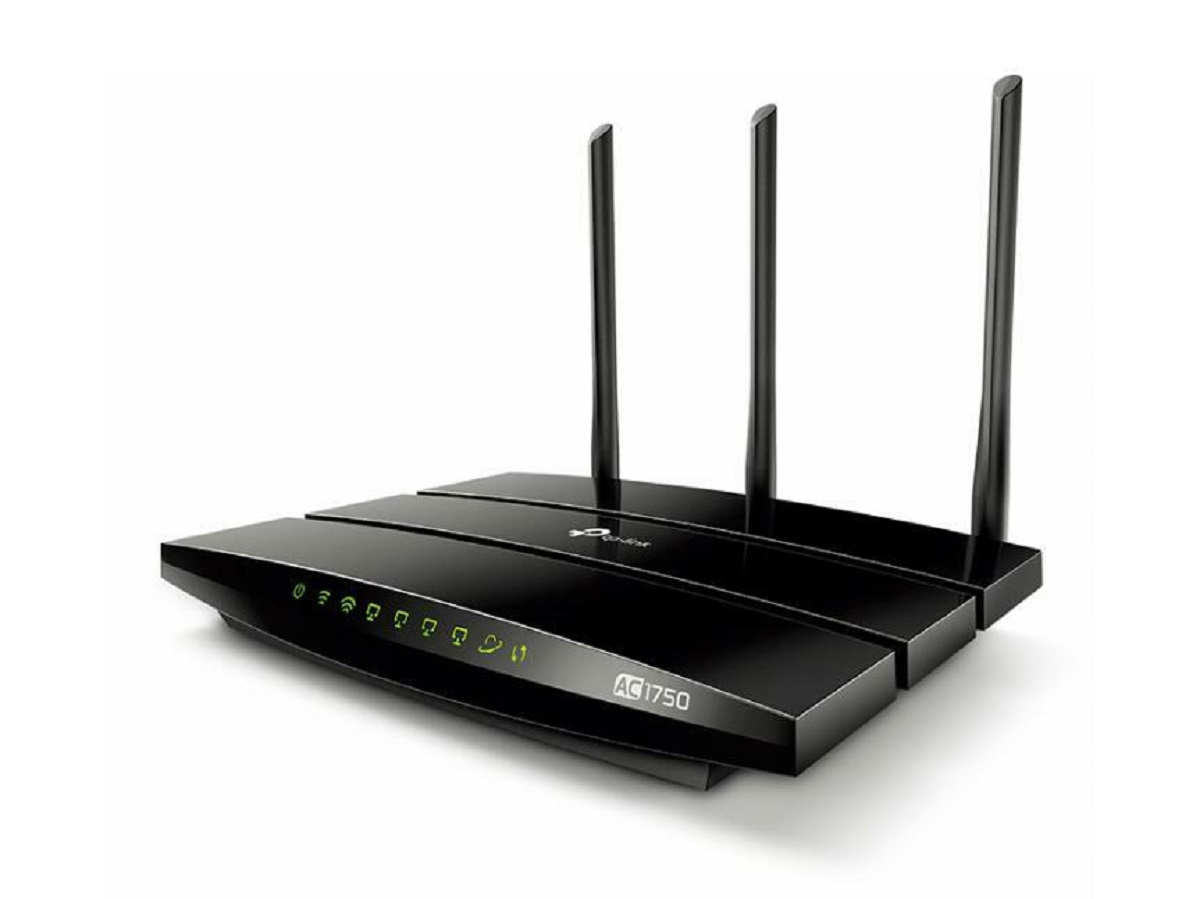Introduction
Welcome to the world of dual band routers! In today’s fast-paced digital age, having a reliable and efficient internet connection is essential. Whether you use the internet for work, entertainment, or staying connected with loved ones, having a powerful router can make a significant difference in your online experience.
A dual band router is a type of router that operates on two different frequencies – 2.4GHz and 5GHz. This means that it can simultaneously support connections on both frequencies, allowing you to take advantage of the benefits each frequency offers. In this article, we will explore what dual band routers are, their benefits, and how to set them up properly.
With a dual band router, you can enjoy faster internet speeds, greater bandwidth, and reduced interference. The 2.4GHz frequency has a longer range but may be susceptible to interference from other devices, while the 5GHz frequency provides faster speeds but has a shorter range. By using both frequencies, you can optimize your internet connection for different devices and activities.
Setting up a dual band router may seem daunting at first, but it is actually quite simple. You can easily connect to either the 2.4GHz or 5GHz network depending on your device capabilities and usage needs. Additionally, you can customize your router settings to prioritize certain devices or manage bandwidth to ensure a smooth and seamless online experience for all connected devices.
In the following sections, we will delve deeper into the benefits of dual band routers, step-by-step instructions on how to set them up, tips for choosing the right frequency for your devices, techniques for managing bandwidth, and troubleshooting common issues that may arise. So, let’s get started and unlock the full potential of your internet connection with a dual band router!
What is a Dual Band Router?
A dual band router is a type of router that operates on two different frequencies – 2.4GHz and 5GHz. Traditionally, routers operated only on the 2.4GHz frequency, but with the increasing demand for faster internet speeds and the growing number of devices connected to a single network, the need for a more advanced solution arose. This is where dual band routers come into play.
The 2.4GHz frequency has been the standard for many years and is still widely used today. It offers a long-range signal that can easily penetrate through walls and other obstacles. However, due to its popularity and overcrowding in urban areas, the 2.4GHz frequency can become congested, leading to slower speeds and potential interference from other devices such as wireless phones, microwaves, or Bluetooth devices.
On the other hand, the 5GHz frequency provides faster speeds and a more reliable connection, especially in areas with heavy network congestion. The 5GHz frequency has a shorter range compared to 2.4GHz, but it offers less interference from other devices since it is less commonly used.
With a dual band router, you can take advantage of both frequencies simultaneously. This means that you can connect devices that require a longer range or are located far from the router to the 2.4GHz network, while devices that need faster speeds or are closer to the router can connect to the 5GHz network.
It’s important to note that not all devices are capable of connecting to the 5GHz frequency. Older devices or certain IoT devices may only support the 2.4GHz frequency. However, newer devices such as smartphones, laptops, and gaming consoles are often equipped with dual band capabilities, allowing them to connect to both frequencies.
Overall, dual band routers offer more flexibility, improved performance, and a better overall user experience. By utilizing two frequencies, they can effectively handle the demands of modern households and ensure a stable internet connection for all connected devices, even in dense urban areas with high network congestion.
Benefits of Dual Band Routers
Dual band routers offer a range of benefits that can significantly enhance your internet experience. Let’s explore some of the key advantages of using a dual band router.
- Faster Speeds: One of the primary advantages of dual band routers is their ability to provide faster internet speeds. The 5GHz frequency offers higher bandwidth and less interference, resulting in improved download and upload speeds for tasks such as streaming HD videos, online gaming, or large file transfers.
- Reduced Interference: The 2.4GHz frequency is often crowded with other devices like wireless phones, baby monitors, and neighboring Wi-Fi networks. This congestion can lead to slower speeds and signal interference. By using the 5GHz frequency, which is less crowded, dual band routers offer a cleaner and more reliable connection with reduced interference.
- Flexible Connectivity: Dual band routers provide the flexibility to connect devices to either the 2.4GHz or 5GHz network based on their specific needs. Older devices or devices that require a longer range can be connected to the 2.4GHz frequency, while newer devices with higher bandwidth requirements can utilize the 5GHz frequency for optimal performance.
- Improved Range: While the 5GHz frequency has a shorter range compared to the 2.4GHz frequency, dual band routers with beamforming technology can help extend and focus the signal to reach devices located further away. This feature enhances the overall range and coverage of the router, ensuring a stable connection throughout your home or office.
- Smoother Streaming and Gaming: Dual band routers’ ability to handle multiple devices and bandwidth-intensive activities simultaneously makes them ideal for streaming high-definition content or playing online games. With faster speeds, reduced latency, and less interference, you can enjoy smooth and uninterrupted streaming and gaming experiences.
These are just a few of the benefits that dual band routers have to offer. By providing faster speeds, reduced interference, flexible connectivity options, improved range, and smoother streaming and gaming experiences, dual band routers can significantly enhance your internet connection and elevate your online activities to the next level.
How to Set Up a Dual Band Router
Setting up a dual band router may seem like a complex task, but with the right guidance, it can be a straightforward process. Here are the steps to set up your dual band router:
- Choose the Right Location: Place your router in a central location in your home or office, preferably elevated and away from obstructions. This will ensure better coverage and signal strength for both the 2.4GHz and 5GHz networks.
- Connect your Modem: Connect one end of an Ethernet cable to the Ethernet port on your modem and the other end to the WAN port on your dual band router. This will establish a connection between your modem and router.
- Power it Up: Plug in the power adapter of your dual band router to a power outlet and turn it on. Wait for the router to initialize and establish a connection with the modem.
- Access the Router Interface: Open a web browser on a computer or mobile device connected to the network. Enter the default IP address of the router (usually found on the router itself or in the user manual) in the address bar. This will bring you to the router’s login page.
- Log in to the Router: Enter the default username and password provided by the manufacturer, or the credentials you previously set up, to log in to the router interface.
- Configure Wireless Settings: In the router settings, locate the wireless settings section. Here, you can customize the SSID (network name) for both the 2.4GHz and 5GHz networks. It’s a good idea to differentiate the names to easily identify each network.
- Set Security Options: Enable WPA2 encryption and create a secure password for your Wi-Fi networks. This will ensure that only authorized users can connect to your network.
- Save Settings and Reboot: After making changes to the wireless settings, save your changes and allow the router to reboot. This will apply the new settings.
- Connect Devices: Now, you can connect your devices to the appropriate network based on their capabilities and usage needs. Older devices or devices that require a longer range can connect to the 2.4GHz network, while newer devices can connect to the 5GHz network for faster speeds.
Following these steps will help you set up your dual band router and optimize its performance. Remember to refer to the user manual provided by the manufacturer for specific instructions related to your router model.
Connecting to the 2.4GHz Network
The 2.4GHz network on your dual band router provides a longer range and better penetration through walls and obstacles. This makes it ideal for older devices or devices located far from the router. Here’s how you can connect to the 2.4GHz network:
- Access Wi-Fi Settings: On your device, navigate to the Wi-Fi settings menu. This can usually be found in the settings app or in the system tray on your device’s home screen.
- Select the 2.4GHz Network: In the list of available networks, locate the network name (SSID) for the 2.4GHz network that you set up during the router configuration process. Select this network to connect to it.
- Enter the Password: If prompted, enter the password for the 2.4GHz network. This is the password you set during the router setup. Make sure to enter it correctly to establish a successful connection.
- Wait for Connection: After entering the password, wait for your device to connect to the 2.4GHz network. Once connected, you should see a Wi-Fi symbol or indicator on your device’s screen, indicating a successful connection.
- Verify Connection: To verify that you are connected to the 2.4GHz network, you can try accessing the internet or loading a webpage on your device. If the connection is successful, you are now connected to the 2.4GHz network on your dual band router.
It’s important to note that devices that are only compatible with the 2.4GHz frequency will automatically connect to this network. However, newer devices that support both frequencies may need to be manually connected to the 2.4GHz network if they are currently connected to the 5GHz network.
By connecting to the 2.4GHz network on your dual band router, you can ensure a stable and reliable connection for devices that require a longer range or are located further away from the router. This network provides good coverage throughout your home or office, allowing you to stay connected and enjoy the benefits of your dual band router.
Connecting to the 5GHz Network
The 5GHz network on your dual band router offers faster speeds and less interference, making it ideal for newer devices or devices that require high-performance connectivity. Here’s how you can connect to the 5GHz network:
- Access Wi-Fi Settings: Open the Wi-Fi settings menu on your device. This can usually be found in the settings app or in the system tray on your device’s home screen.
- Select the 5GHz Network: Look for the network name (SSID) for the 5GHz network that you set up during the router configuration process. This network might have a slightly different name than the 2.4GHz network to differentiate it. Select the 5GHz network to connect to it.
- Enter the Password: If prompted, enter the password for the 5GHz network, which you set during the router setup. Double-check to ensure you enter the password correctly, as it is case-sensitive.
- Wait for Connection: After entering the password, wait for your device to establish a connection to the 5GHz network. It might take a moment for the connection to be established. Once connected, you should see a Wi-Fi symbol or indicator on your device’s screen, confirming a successful connection.
- Verify Connection: To ensure that you are successfully connected to the 5GHz network, try accessing the internet or loading a webpage on your device. If the connection is successful, you are now connected to the 5GHz network of your dual band router.
Keep in mind that not all devices are capable of connecting to the 5GHz network. Older devices or certain IoT devices might only support the 2.4GHz frequency. However, newer devices, such as laptops, smartphones, and modern gaming consoles, often have dual band capabilities and can connect to both frequencies.
Connecting to the 5GHz network allows you to take advantage of faster speeds and reduced interference, especially if you are performing bandwidth-intensive tasks like streaming high-definition videos, online gaming, or large file transfers. The 5GHz network provides a reliable and high-performance connection for devices located near the router.
By utilizing the 5GHz network on your dual band router, you can ensure a seamless and efficient online experience for your devices that require faster speeds and lower latency, enhancing your overall productivity and enjoyment.
Choosing the Right Frequency for Your Devices
When using a dual band router, it’s important to understand which frequency is best suited for your devices’ needs. Here are some factors to consider when choosing the right frequency:
- Device Capabilities: Check your devices’ specifications to determine if they support both 2.4GHz and 5GHz frequencies. Newer devices typically have dual band capabilities, allowing them to connect to either frequency. However, older devices may only support the 2.4GHz frequency.
- Speed vs. Range: The 2.4GHz frequency offers a longer range but lower speeds compared to the 5GHz frequency. If you have devices located far from the router or in areas with many obstacles, the 2.4GHz frequency is ideal. However, if your devices require faster speeds and are closer to the router, the 5GHz frequency will provide optimal performance.
- Network Congestion: Consider the level of network congestion in your area. The 2.4GHz frequency is more susceptible to interference from other devices, such as wireless phones or neighboring Wi-Fi networks. If you live in an urban area with many wireless devices, the 5GHz frequency may offer less interference and better performance.
- Device Usage: Assess how you use your devices. If you primarily use them for web browsing, email, or light streaming, the 2.4GHz frequency will suffice. However, if you engage in bandwidth-intensive activities like gaming, 4K streaming, or large file transfers, the 5GHz frequency will provide a smoother and more reliable experience.
- Utilize Both Frequencies: If you have a dual band router and multiple devices, don’t hesitate to take advantage of both frequencies. Connect devices that require range or have older Wi-Fi capabilities to the 2.4GHz network and allocate the 5GHz network for devices that require faster speeds. This way, you can optimize the performance of each device and ensure a balanced network load.
Ultimately, choosing the right frequency for your devices depends on their capabilities, your usage requirements, and the environment in which you are using them. Understanding the strengths and weaknesses of each frequency will help you make an informed decision, ensuring the best possible performance for your devices and maximizing the benefits of your dual band router.
Managing Bandwidth and Prioritizing Devices
Managing the bandwidth and prioritizing devices on your dual band router can help optimize the performance of your network and ensure a smooth and seamless online experience. Here are some strategies to consider:
- Quality of Service (QoS): Most dual band routers come with Quality of Service (QoS) settings that allow you to prioritize certain devices or types of traffic on your network. By enabling QoS, you can allocate more bandwidth to devices or applications that require it, such as video streaming or online gaming. This ensures that high-priority activities receive sufficient resources and remain unaffected by other network traffic.
- Bandwidth Allocation: Some routers allow you to manually allocate bandwidth to specific devices or applications. You can set limits on the bandwidth usage of certain devices to prevent them from hogging the network and affecting the performance of other devices. This is particularly useful if you have devices that require a lot of bandwidth, such as computers running intensive applications or file-sharing programs.
- Device Prioritization: You can prioritize specific devices on your network to ensure they always receive the highest possible bandwidth. This is particularly useful for devices that require constant and consistent internet connectivity, such as smart TVs for streaming or work laptops for video conferencing. By giving these devices priority access to bandwidth, you can ensure a smooth and uninterrupted experience.
- Guest Network: If you often have guests or visitors who connect to your network, consider setting up a separate guest network. This way, guests can connect to a separate Wi-Fi network, isolated from your main network. By limiting the bandwidth and network access for the guest network, you can prevent it from affecting the performance of your devices and ensure that your bandwidth is dedicated to your own devices.
- Regularly Review Settings: It’s a good practice to regularly review and adjust your bandwidth management settings based on your current needs. As your usage patterns change or new devices are added to your network, you may need to reevaluate the priority settings and bandwidth allocations to maintain optimal performance.
By actively managing bandwidth and prioritizing devices on your dual band router, you can ensure that your network resources are efficiently utilized and that each device receives the necessary bandwidth for a seamless online experience. Experiment with different settings and configurations to find the setup that works best for your specific needs and maximize the performance of your network.
Troubleshooting Common Issues with Dual Band Routers
While dual band routers offer improved performance and flexibility, they may encounter certain issues from time to time. Here are some common issues you may experience with dual band routers and how to troubleshoot them:
- Interference and Connectivity Problems: If you are experiencing connectivity issues or intermittent drops in signal, it could be due to interference from other devices. Try changing the Wi-Fi channel on your router to a less congested one, or move your router away from other devices that may be causing interference.
- Slow Internet Speeds: If your internet speeds are slower than expected, check if any devices connected to your network are consuming excessive bandwidth. Use the router’s management interface to identify which devices are using the most bandwidth and consider limiting their access to optimize speeds for other devices.
- Incompatibility with Devices: Some older devices may not be compatible with the 5GHz frequency, or they may experience issues when connected to it. In such cases, ensure that your devices are updated with the latest firmware and driver software. If the problem persists, try connecting these devices to the 2.4GHz network instead.
- Wi-Fi Range Limitations: Dual band routers typically have a shorter range on the 5GHz frequency compared to the 2.4GHz frequency. If you have devices that are located far from the router and experience weak signals or slower speeds, consider using Wi-Fi range extenders or access points strategically placed throughout your home or office to extend the 5GHz network coverage.
- Configuration Issues: Incorrect or improper router configurations can also result in connectivity problems. Double-check your settings, including SSID names, security settings, and password entries, to ensure they are correctly configured. Resetting the router to its factory settings and reconfiguring it from scratch can also help resolve configuration-related issues.
- Router Firmware Updates: Periodically check for firmware updates for your dual band router from the manufacturer’s website. Keeping your router’s firmware up to date can resolve known issues, improve stability, and bring new features or enhancements to your router’s performance.
If you are still experiencing issues with your dual band router after trying these troubleshooting steps, refer to the manufacturer’s documentation or contact their customer support for further assistance. They may be able to provide additional guidance specific to your router model and help resolve any persistent issues you are facing.
Remember, each router model may have its own unique troubleshooting steps, so it is always a good idea to consult the user manual or online resources provided by the manufacturer for specific troubleshooting instructions.
Conclusion
Dual band routers offer a powerful solution to meet the demands of our increasingly connected world. By operating on both the 2.4GHz and 5GHz frequencies, these routers provide enhanced flexibility, improved speeds, reduced interference, and better overall performance.
In this article, we explored the concept of dual band routers and their benefits. We discussed how to set up a dual band router, connect to both the 2.4GHz and 5GHz networks, and choose the right frequency for your devices. Additionally, we explored techniques for managing bandwidth, prioritizing devices, and troubleshooting common issues that may arise.
With a dual band router, you can enjoy faster internet speeds, reduce interference, and ensure a seamless online experience for all your devices. Whether you’re streaming HD videos, engaging in online gaming, or simply browsing the web, a dual band router can optimize your internet connection and elevate your digital activities.
Remember to consider the range and performance needs of your devices when deciding which frequency to connect to. Utilize the management features of your router, such as QoS settings or device prioritization, to customize your network and maximize the performance of your connected devices. Regularly review and adjust these settings to adapt to changing usage patterns and device requirements.
Should you encounter any issues with your dual band router, refer to the troubleshooting tips provided in this article or consult the manufacturer’s documentation. By following these steps, you can often resolve common issues and maintain a stable and reliable connection.
In conclusion, a dual band router is a valuable investment for anyone seeking to optimize their internet performance. By understanding its capabilities, setting it up properly, and utilizing its features effectively, you can unlock the full potential of your network and enjoy a seamless online experience.







